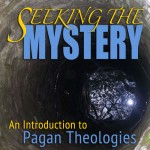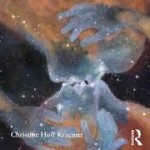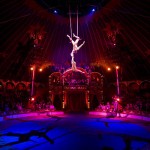 As I mentioned in a previous post, Pathways in Modern Western Magic is Concrescent Press’s answer to the conditions of contemporary academic publishing—an activity that, especially for scholars of area studies, is at best difficult and at worst, financially untenable. The book is the first release under the Concrescent Scholars imprint, “dedicated to peer-reviewed works of scholarship in the fields of Esotericism, Pagan religion and culture, Magic, and the Occult from within, and without, the Academy.” In other words, this collection contains contributions from scholars, some of whom are practitioners, and practitioners who though not involved in the academy, are serious about the scholarly study of magic. Each article has been “peer-reviewed,” meaning that it was reviewed and deemed fit for publication by scholars with PhDs in relevant fields.
As I mentioned in a previous post, Pathways in Modern Western Magic is Concrescent Press’s answer to the conditions of contemporary academic publishing—an activity that, especially for scholars of area studies, is at best difficult and at worst, financially untenable. The book is the first release under the Concrescent Scholars imprint, “dedicated to peer-reviewed works of scholarship in the fields of Esotericism, Pagan religion and culture, Magic, and the Occult from within, and without, the Academy.” In other words, this collection contains contributions from scholars, some of whom are practitioners, and practitioners who though not involved in the academy, are serious about the scholarly study of magic. Each article has been “peer-reviewed,” meaning that it was reviewed and deemed fit for publication by scholars with PhDs in relevant fields.
Unlike traditional academic publishers, however, Concrescent is set up to be fast and nimble. Headed by Pagan priest and PhD candidate Sam Webster, the press prides itself on bringing manuscripts through the publication process in a timely fashion—much more quickly than the 2-3 year process that is typical for most academic publishers. I see this publishing model as being very promising for scholars of area studies, especially independent scholars who are more concerned with being read than with the dog-eat-dog realities of tenure reviews. The editor of the collection, Nevill Drury, may be a perfect example of this new kind of scholar: having completed a PhD at the University of Newcastle, Australia in 2008, Drury now brings together formal academic training in the humanities with decades of experience in editing and publishing. His recent publications include several books on occultism and art.
So why might you, dear reader, want to read Pathways in Modern Western Magic?
First of all, although the anthology is scholarly, it is far from dry. The articles are accessible and engagingly written. For a reader who wants an introduction to the academic study of magic or an overview of major areas of magical practice in the West, this book delivers. Pathways includes articles on Wicca and witchcraft, neo-shamanism in the United States and Europe, Heathen seiđr, Thelemic sex magick, the Golden Dawn system, Satanism, Tantra, and more. In addition to these established topics of study, the collection also offers essays on lesser-known traditions and figures: Dragon Rouge; the Temple of Set; chaos magic; artist/occultists Ithell Colquhoun, Austin Osman Spare, and Rosaleen Norton; and technoshamanism. Especially for readers new to the field of Western esotericism studies, the book provides an overview of modern Western magic while also opening up tantalizing new areas for exploration and research.
As a religious studies scholar, however, I’m always interested in what a book has to offer to the larger field. What would someone with an interest in religion and how it is (or can be) studied get out of this book? Some of the book’s articles don’t have much to offer the reader who isn’t already interested in magic: they are descriptive or historical pieces that provide essential context for the topic, but don’t necessarily make an argument for why a reader from outside the field should care. Some, however, do make broader arguments that I still find myself chewing over weeks after finishing the collection.
Nevill Drury’s introduction makes a case for the idea that emic (basically, insider) approaches to the study of religion are just as valuable as etic (outsider, “objective”) approaches. Although his article seems to have been prepared before the publication of Markus Altena Davidsen’s essay “What Is Wrong with Pagan Studies?”, Drury addresses a number of Davidsen’s criticisms. Davidsen is impatient with emic, insider, and “religionist” approaches, believing that they lead to a lack of skepticism—in other words, scholars with insider approaches risk uncritically agreeing with their subjects and taking their assumptions for granted. As support, Davidsen gives examples of Pagan scholars making arguments that seem to be contradicted by their data, perhaps out of loyalty to their subjects.
On the other hand, Davidsen praises etic “outsider” scholars who, as Drury points out, have made equally clumsy errors. Drury criticizes anthropologist Tanya Luhrmann, for example, for her lack of grounding in the historical study of magic. Rather than approaching British Wicca using a definition of magic derived from Western esotericism (from which Wicca is partially, but directly, derived), Luhrmann uses a theory of magic developed from the practices of pre-literate Oceanic cultures. In other words, her contextualizing theory is wildly inappropriate for the subject matter.
Davidsen makes an important point that insider perspectives can lack skepticism. But, as Drury argues, an insider can bring a far greater depth and integration of knowledge to a subject and so avoid such gross errors of context. (In her essay, Lynne Hume makes a similar argument, suggesting that too great a degree of skepticism or investment in outside theory prevents researchers from genuinely participating in the religious traditions they study and so threatens to distort their perceptions.)
Nikki Bado’s essay uses the Wiccan Triple Goddess as a jumping-off point for issues that are broadly relevant to religious studies: contemporary challenges to biological determinism that undergird sexism; literalism and the way it prevents access to other modes of truth (including the rational, allegorical, mythic, and faith stances); and most importantly, the nigh impossibility of operating outside of the paradigms of one’s own culture. Bado is an advocate of “reflexive” rather than “objective” scholarship; she believes that it is more helpful for scholars to identify and reflect on their biases within their work than it is to attempt to free themselves from them. As a low-level example, Bado focuses on the number three in both myth and scholarship. Tripartite models and triple aspects are pervasive in Western culture, conditioning us to look for and find triples even when there are other possibilities. She writes, “The problem with paradigms is that once they are created—some would say discovered—it is nearly impossible to escape their influence. Once identified, they appear everywhere, dominating and even determining how and what we see. If something doesn’t fit the model, we manipulate it until it does” (80). Bado ends with a call, not to abandon paradigms and categories, but for greater openness to their subjectivity—in other words, for a better understanding that our models are maps, not the territory.
I also particularly enjoyed James R. Lewis’ essay on the role of Anton LaVey’s The Satanic Bible in modern Satanism. Lewis brings his own original ethnographic research on Satanists into the essay to argue that, despite Satanists’ explicit rejection of traditional religious values, many use LaVey’s book in an extremely traditional fashion—as an authoritative textual source. This continues to be the case even as the level of education among Satanists has risen and more and more information about LaVey’s fabricated biography has come to light. Even more interestingly, contemporary Satanists’ strategy of textual legitimization is completely different from LaVey’s strategy in the Satanic Bible itself. Rather than appealing to a particular authority or text, LaVey’s philosophy was based in scientific thinking: secular humanism and a particular understanding of human nature based on Darwinian evolution. Lewis concludes, “It appears that being raised in a religious tradition that locates the source of authority in religious figures and sacred texts creates an unconscious predisposition that can be carried over to other kinds of persons and books—even in the unlikely context of contemporary Satanism” (278). The issue of how converts’ former religious affiliations influence their experiences of the religions they choose as adults has wide-ranging implications for religious studies, and Lewis’ article is a fascinating contribution to that conversation.
Overall, Pathways has the most to offer to a reader who is just beginning a formal academic study of Western magic. When it broaches less-treated topics of study and connects its subject matter to broader discussions in religious studies, however, it is also potentially valuable for established scholars of esotericism or contemporary Paganism. I am pleased to add it to my personal library.
[Drury, Nevill, editor. Pathways in Modern Western Magic. Richmond, CA: Concrescent Scholars, 2012. 484 pp. $39.95 (softcover).]















